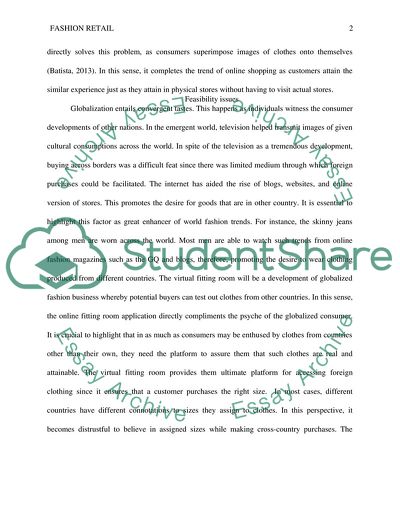Cite this document
(“The Feasibility of Virtual Fitting Room in the Fashion Industry Literature review”, n.d.)
Retrieved from https://studentshare.org/visual-arts-film-studies/1654185-the-feasibility-of-virtual-fitting-room-in-the-fashion-industry
Retrieved from https://studentshare.org/visual-arts-film-studies/1654185-the-feasibility-of-virtual-fitting-room-in-the-fashion-industry
(The Feasibility of Virtual Fitting Room in the Fashion Industry Literature Review)
https://studentshare.org/visual-arts-film-studies/1654185-the-feasibility-of-virtual-fitting-room-in-the-fashion-industry.
https://studentshare.org/visual-arts-film-studies/1654185-the-feasibility-of-virtual-fitting-room-in-the-fashion-industry.
“The Feasibility of Virtual Fitting Room in the Fashion Industry Literature Review”, n.d. https://studentshare.org/visual-arts-film-studies/1654185-the-feasibility-of-virtual-fitting-room-in-the-fashion-industry.


